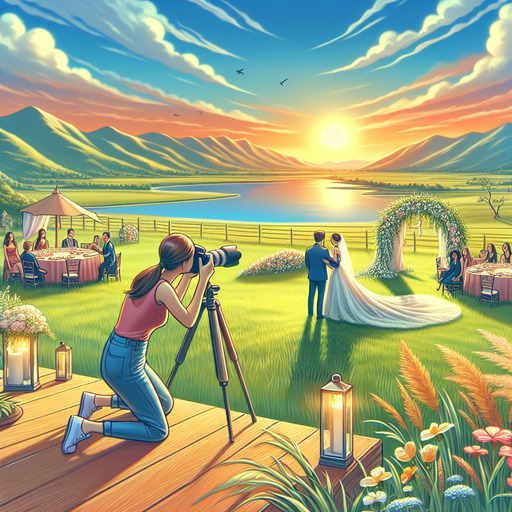
-
Table of Contents
Capture your perfect outdoor wedding moments with these essential wedding photography tips! Learn more here.
Introduction
Outdoor weddings offer a picturesque and natural backdrop that can make wedding photos truly magical. However, capturing the perfect moments in an outdoor setting comes with its own set of challenges and considerations. From dealing with varying lighting conditions to making the most of the natural scenery, wedding photographers need to be well-prepared to ensure they deliver stunning images. This guide provides essential tips for wedding photographers to help them navigate the unique aspects of outdoor weddings, ensuring that every shot is as beautiful and memorable as the occasion itself.
Essential Wedding Photography Tips for Stunning Outdoor Weddings
Outdoor weddings offer a unique and picturesque setting that can result in stunning wedding photographs. However, capturing the beauty of an outdoor wedding requires careful planning and consideration of various factors. To ensure that your wedding photos are as breathtaking as the event itself, there are several essential tips to keep in mind.
First and foremost, understanding the lighting conditions is crucial. Natural light can be both a blessing and a challenge. The golden hours, which occur shortly after sunrise and just before sunset, provide soft, warm light that is ideal for photography. During these times, the light is diffused and creates a flattering glow on the subjects. However, midday sun can be harsh and create unflattering shadows. To mitigate this, consider using reflectors or diffusers to soften the light. Additionally, scouting the location beforehand allows you to identify areas with optimal lighting and plan your shots accordingly.
Another important aspect to consider is the weather. Outdoor weddings are subject to the whims of nature, and it is essential to be prepared for any eventuality. Having a backup plan, such as a tent or an indoor location, ensures that the wedding can proceed smoothly regardless of the weather. Moreover, being adaptable and ready to capture spontaneous moments, even in less-than-ideal conditions, can result in some of the most memorable and unique photographs.
Composition plays a significant role in creating visually appealing wedding photos. Utilizing the natural surroundings to frame the couple can add depth and interest to the images. For instance, positioning the couple against a backdrop of trees, mountains, or a body of water can enhance the overall composition. Additionally, incorporating elements of the environment, such as flowers, leaves, or architectural features, can add texture and context to the photographs. Experimenting with different angles and perspectives can also yield creative and dynamic shots.
Furthermore, capturing candid moments is essential for conveying the genuine emotions and atmosphere of the wedding day. While posed portraits are important, candid shots often tell a more authentic story. Being unobtrusive and allowing the couple and guests to interact naturally can result in heartfelt and spontaneous images. To achieve this, using a telephoto lens can help you capture intimate moments from a distance without intruding on the scene.
In addition to candid shots, it is important to capture the details that make the wedding unique. This includes photographing the décor, floral arrangements, and any personal touches that the couple has incorporated into their special day. These details not only add variety to the wedding album but also help to tell the complete story of the event.
Post-processing is another critical step in creating stunning wedding photographs. Editing allows you to enhance the colors, contrast, and overall mood of the images. However, it is important to maintain a natural and timeless look. Over-editing can detract from the authenticity of the photographs. Striking a balance between enhancing the images and preserving their natural beauty is key.
Lastly, communication with the couple is paramount. Understanding their vision and preferences ensures that you capture the moments that are most important to them. Discussing the timeline, key events, and any specific shots they desire helps to align expectations and deliver a final product that they will cherish for years to come.
In conclusion, photographing an outdoor wedding requires careful consideration of lighting, weather, composition, and candid moments. By being prepared, adaptable, and attentive to detail, you can create a stunning visual narrative that beautifully captures the essence of the couple’s special day.
Q&A
1. **How can I ensure good lighting for outdoor wedding photos?**
To ensure good lighting for outdoor wedding photos, schedule the shoot during the “golden hour,” which is the hour after sunrise or the hour before sunset. This time provides soft, warm, and flattering natural light. Additionally, use reflectors to bounce light onto the subjects and consider using fill flash to eliminate harsh shadows.